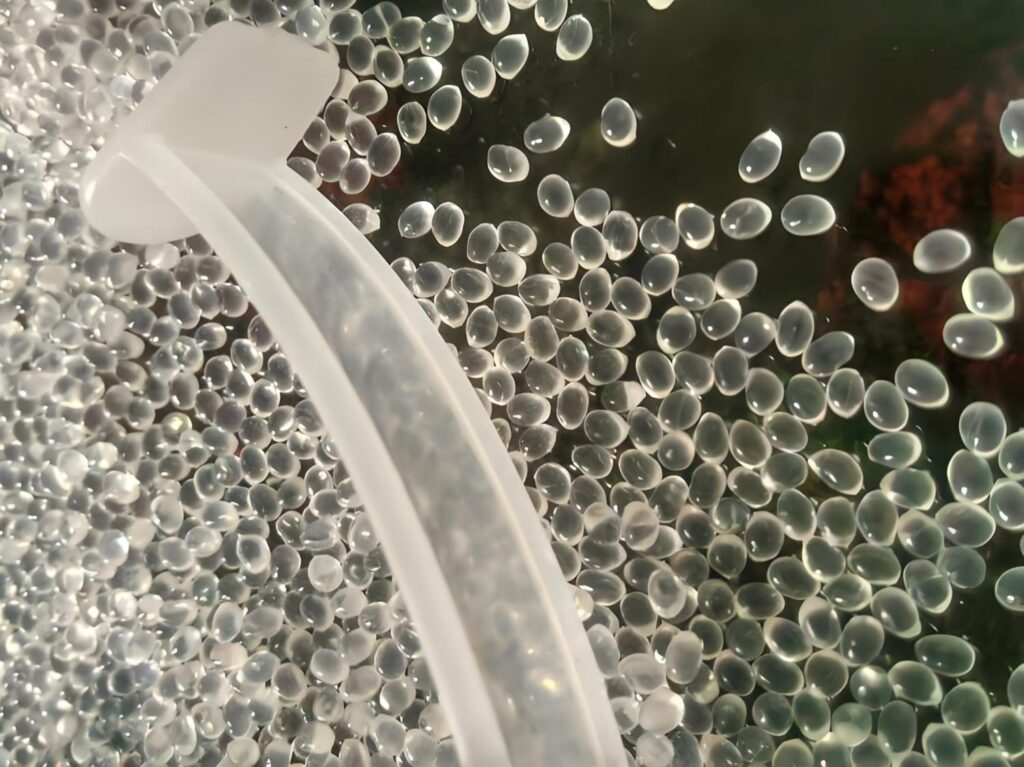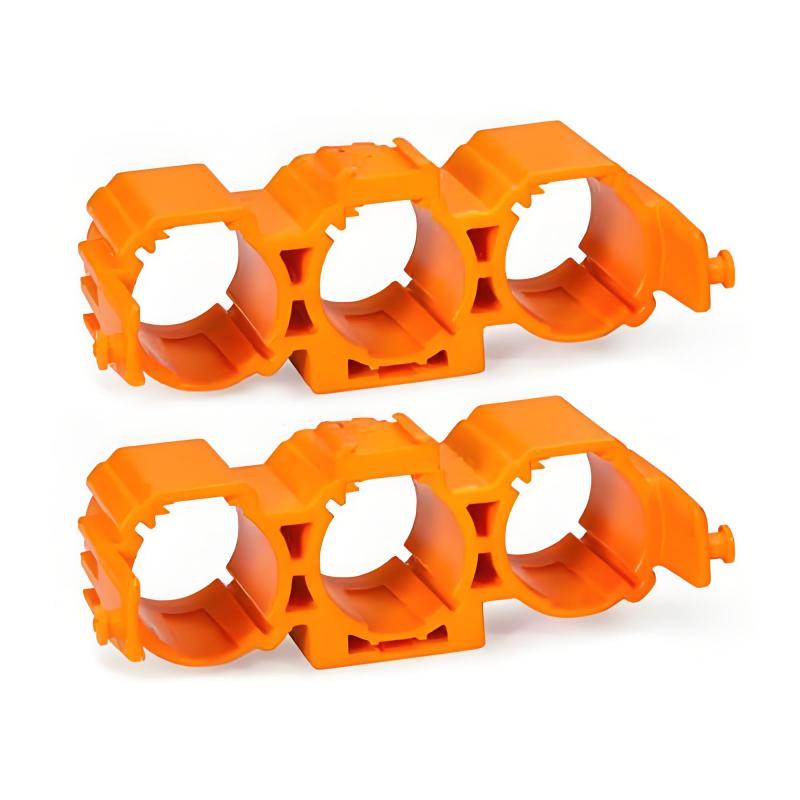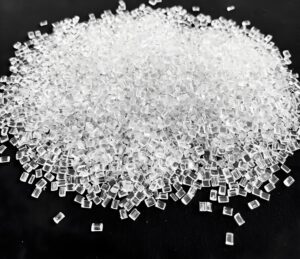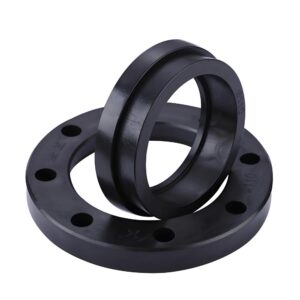Polyethylene, a cornerstone of modern manufacturing, powers industries from packaging to precision engineering. Its melting point—the temperature at which it shifts from solid to a moldable liquid—plays a vital role in how it’s processed and applied. For businesses in the machining industry, understanding this property unlocks better material selection, efficient production, and high-quality results. This guide dives into what makes polyethylene’s melting point so important, how it varies across types, and why it matters for real-world applications, offering actionable insights for engineers and manufacturers worldwide.
What Is the Melting Point of Polyethylene?

Polyethylene, commonly known as PE, is a versatile thermoplastic valued for its strength, flexibility, and cost-effectiveness. The melting point of polyethylene is the temperature at which it becomes pliable, enabling processes like molding, extrusion, or machining. Typically, this ranges from 115°C to 135°C (239°F to 275°F), though the exact figure depends on the type of polyethylene and its molecular makeup.
This thermal property is critical for manufacturers. For example, heating polyethylene to its melting point allows it to be shaped into everything from plastic bags to industrial pipes. However, overheating risks degrading the material, while underheating can lead to incomplete molding. By mastering this balance, companies ensure consistent, high-quality outputs tailored to their needs.
Melting Point of Different PE Types
Not all polyethylene is created equal. Its various forms—each with unique molecular structures—exhibit distinct melting points, influencing their suitability for specific applications. Here’s a breakdown of the main types:
Low-Density Polyethylene (LDPE)
LDPE, prized for its flexibility, is used in products like grocery bags and shrink wrap. Its melting point hovers between 105°C and 115°C (221°F to 239°F). The branched structure of LDPE lowers its crystallinity, making it easier to melt and process at relatively low temperatures.
High-Density Polyethylene (HDPE)
HDPE, with its rigid and robust nature, is ideal for containers, pipes, and cutting boards. Its melting point ranges from 120°C to 130°C (248°F to 266°F). Higher crystallinity means HDPE requires more heat to melt, offering greater durability for demanding applications.
Linear Low-Density Polyethylene (LLDPE)
LLDPE blends LDPE’s flexibility with added strength, making it perfect for stretch films and cables. Its melting point, typically 120°C to 125°C (248°F to 257°F), varies slightly based on its composition, offering a middle ground for versatile processing.
Ultra-High Molecular Weight Polyethylene (UHMWPE)
UHMWPE is a high-performance variant used in medical implants and heavy-duty machinery parts. Its melting point, from 130°C to 135°C (266°F to 275°F), reflects its dense molecular structure, which enhances strength but demands precise temperature control.
Choosing the right polyethylene type hinges on understanding these melting point differences, ensuring optimal performance for specific manufacturing goals.
Importance of the Melting Point of Polyethylene in Manufacturing
The melting point of polyethylene isn’t just a number—it’s a game-changer for industrial processes. Here’s why it matters:
Streamlined Processing

Whether it’s extrusion, injection molding, or thermoforming, polyethylene must reach its melting point to become workable. Knowing the exact temperature ensures equipment settings are spot-on, avoiding issues like uneven flow or material burn. This precision is key to producing flawless parts.
Smarter Material Choices
Different projects call for different polyethylene types. HDPE’s higher melting point suits applications like hot-fill containers, while LDPE’s lower melting point is better for flexible films. Matching the material’s thermal properties to the job enhances product reliability.
Enhanced Quality Assurance
Consistent temperature control during processing prevents defects like warping or surface imperfections. By aligning with the melting point, manufacturers maintain tight quality standards, delivering parts that meet client expectations every time.
Cost and Energy Savings
Heating polyethylene to the right temperature minimizes energy waste. Overheating spikes utility costs, while underheating leads to rework. Fine-tuning processes around the melting point boosts efficiency and keeps production budgets in check.
This property shapes every stage of manufacturing, from planning to final output, making it a critical factor for success.
Factors Affecting the Melting Point of Polyethylene
Several variables influence polyethylene’s melting point, and understanding them helps manufacturers fine-tune their processes:
Molecular Weight and Structure
Higher molecular weight, as in UHMWPE, increases the melting point due to stronger intermolecular forces. LDPE, with its lower molecular weight and branched structure, melts more easily, requiring less heat.
Crystallinity Levels
Crystallinity—the degree of molecular order—directly impacts the melting point. Highly crystalline HDPE needs more energy to break its structured bonds, raising its melting point. Less crystalline LDPE melts at lower temperatures, simplifying processing.
Additives and Blends
Additives like stabilizers or flame retardants can shift the melting point. For example, plasticizers may lower it for easier molding, while reinforcing agents might raise it for added thermal resistance. Custom formulations tailor polyethylene to specific needs.
Processing Environment
Factors like cooling rates or applied pressure during manufacturing affect crystallinity and, in turn, the melting point. Slow cooling can increase crystallinity, slightly raising the melting point, while rapid cooling may lower it.
Copolymer Modifications
Copolymerizing polyethylene with monomers like butene or hexene, as in LLDPE, can tweak its melting point. These modifications allow manufacturers to balance flexibility and strength for specialized applications.
By accounting for these factors, companies can optimize polyethylene’s performance for precision machining and beyond.
Applications of the Melting Point of Polyethylene in Industry
The melting point of polyethylene drives its use across diverse sectors. Here are some key applications where it makes a difference:
Packaging Solutions
LDPE and LLDPE dominate the packaging world, forming films, bags, and wraps. Their lower melting points enable efficient blown film extrusion, where precise heating creates uniform, durable products. This is critical for food packaging and retail bags.
Piping and Containers
HDPE’s higher melting point makes it a go-to for pipes and containers that handle hot liquids or harsh chemicals. During extrusion, controlled melting ensures seamless, leak-proof products used in plumbing and industrial storage.
Medical and High-Performance Parts
UHMWPE’s elevated melting point and toughness make it ideal for medical implants, like joint replacements, and industrial components, such as bearings. Machining at the right temperature ensures precision and durability in these critical applications.
Recycling and Sustainability
In recycling, polyethylene’s melting point guides the reprocessing of plastics. Sorted materials are melted at specific temperatures to create new products, maintaining quality while supporting eco-friendly practices.
3D Printing Innovations
Polyethylene is gaining traction in 3D printing for prototypes and custom parts. Its melting point dictates filament extrusion settings, enabling manufacturers to craft precise components for testing or niche markets.
These applications highlight how the melting point shapes polyethylene’s role in modern industry, driving efficiency and innovation.
Why Partner with Precionn for Polyethylene Machining
Navigating the complexities of polyethylene’s melting point requires expertise and precision. That’s where Precionn shines. As a trusted name in the machining industry, Precionn delivers tailored solutions for international clients, leveraging deep knowledge of polyethylene’s thermal properties. Whether you’re working with LDPE, HDPE, or UHMWPE, their state-of-the-art machining processes ensure tight tolerances and superior quality. Visit Precionn’s website to learn how their expertise can elevate your next project, from concept to completion.




